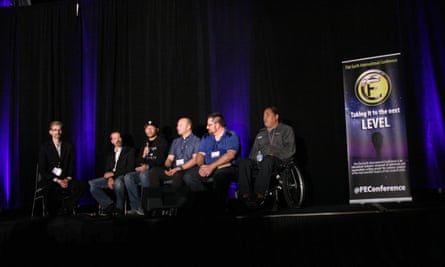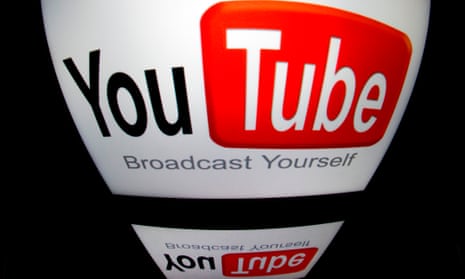Researchers believe they have identified the prime driver for a startling rise in the number of people who think the Earth is flat: Google’s video-sharing site, YouTube.
Their suspicion was raised when they attended the world’s largest gatherings of Flat Earthers at the movement’s annual conference in Raleigh, North Carolina, in 2017, and then in Denver, Colorado, last year.
Interviews with 30 attendees revealed a pattern in the stories people told about how they came to be convinced that the Earth was not a large round rock spinning through space but a large flat disc doing much the same thing.
Of the 30, all but one said they had not considered the Earth to be flat two years ago but changed their minds after watching videos promoting conspiracy theories on YouTube. “The only person who didn’t say this was there with his daughter and his son-in-law and they had seen it on YouTube and told him about it,” said Asheley Landrum, who led the research at Texas Tech University.
The interviews revealed that most had been watching videos about other conspiracies, with alternative takes on 9/11, the Sandy Hook school shooting and whether Nasa really went to the moon, when YouTube offered up Flat Earth videos for them to watch next.
Some said they watched the videos only in order to debunk them but soon found themselves won over by the material.
Landrum said one of the most popular Flat Earth videos, “200 proofs Earth is not a spinning ball” appears to be effective because it offers arguments that appeal to so many mindsets, from biblical literalists and conspiracy theorists to those of a more scientific bent.
One way or another, the interviewees found themselves believers and before long were asking “where is the curve?” and “why is the horizon always at eye level?”

Landrum, who presented her results at the annual meeting of the American Association for the Advancement of Science in Washington DC, said she did not think YouTube was doing anything overtly wrong, but said that if the site wanted to help it could tweak its algorithm to show more accurate information.
“There’s a lot of helpful information on YouTube but also a lot of misinformation,” Landrum said. “Their algorithms make it easy to end up going down the rabbit hole, by presenting information to people who are going to be more susceptible to it.”
“Believing the Earth is flat in of itself is not necessarily harmful, but it comes packaged with a distrust in institutions and authority more generally,” she added. “We want people to be critical consumers of the information they are given, but there is a balance to be had.”
Landrum called on scientists and others to create their own YouTube videos to combat the proliferation of conspiracy videos. “We don’t want YouTube to be full of videos saying here are all these reasons the Earth is flat. We need other videos saying here’s why those reasons aren’t real and here’s a bunch of ways you can research it for yourself.”
But she conceded that some Flat Earthers may not be swayed by a scientists’ words. When the US astrophysicist Neil deGrasse Tyson explained how small sections of large curved surfaces will always appear flat to the little creatures that crawl upon it, his message was seen by some Flat Earthers as patronising and dismissive, Landrum said.
“There’s always going to be a small percentage of people who will reject anything that scientists put out there but maybe there’s a group in the middle that won’t,” she added. “The only tool we have to battle misinformation is to try and overwhelm it with better information.”
Google did not respond to a request for comment.
